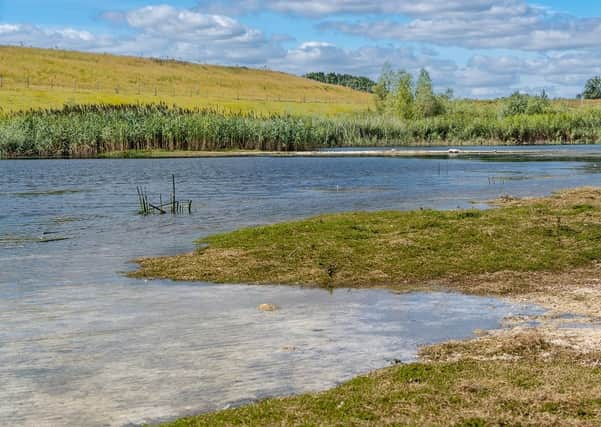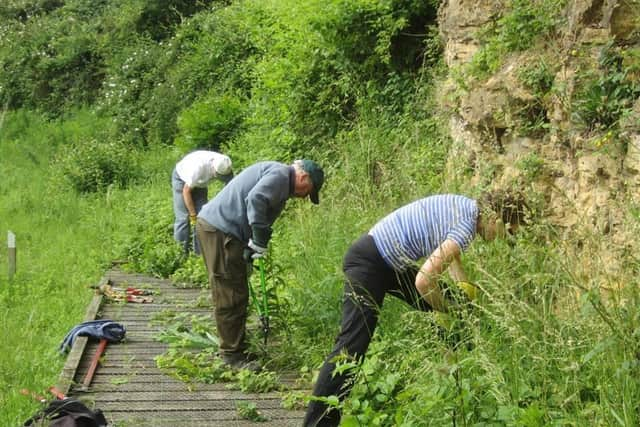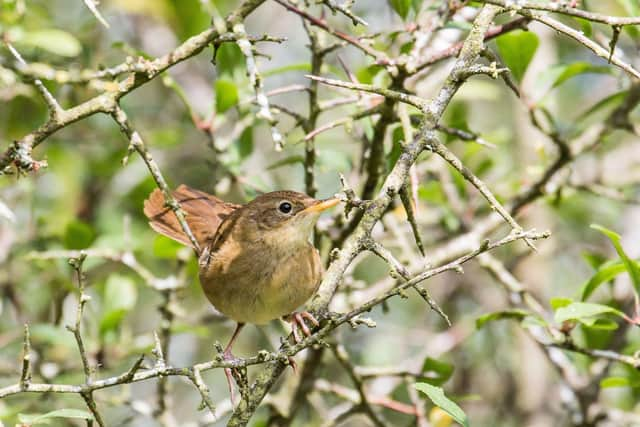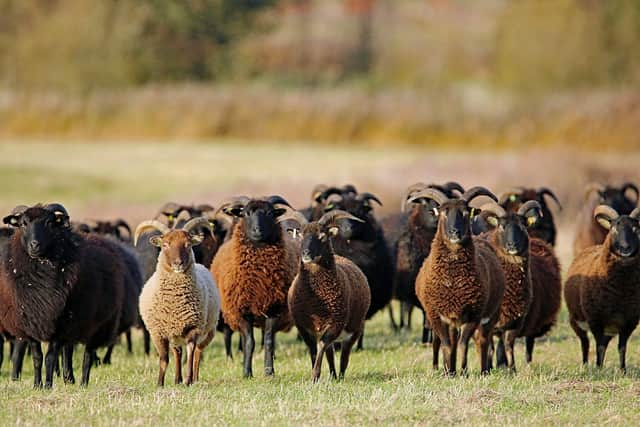Exciting plans to double nature in Peterborough and Cambridgeshire revealed


Natural Cambridgeshire has unveiled five projects as it seeks to transform the county’s environmental landscape and “offer the opportunity for everyone who lives, works and visits Cambridgeshire to enjoy happier and healthier lifestyles”.
The projects include ambitious plans to improve and protect the ‘John Clare Countryside’ - land on the west of the city, south of the Welland, north of the Nene and east of the A1 - and the Nene Valley.
Advertisement
Hide AdAdvertisement
Hide AdNatural Cambridgeshire, which is a local nature partnership made up of key organisations, businesses and communities, believes “nature-based solutions will play a crucial role in addressing the challenges of our climate emergency and in the post Covid-19 recovery”.


Its chair Richard Astle added: “Anyone who saw David Attenborough’s programme on Extinction: The Facts knows that nature is in peril. Not just in the rainforest but here in Peterborough too.
“The list of species that are in dramatic decline locally goes on and on - from hedgehogs to hares, butterflies to bees. But the good news is that we can make a difference.
“The Doubling Nature ambition and the John Clare Countryside project offer the chance to turn the tide and help nature recover. They are all about local people taking action, not wringing their hands. And we know that if nature flourishes, people are generally healthier and happier. That has to be something worth being involved in.”
Advertisement
Hide AdAdvertisement
Hide AdNatural Cambridgeshire will co-ordinate the delivery of the ambitious project.


Its role includes influencing decision-makers and engaging with landowners, farmers and commercial developers to help design and support schemes and policies that put nature at the heart of economic activity and support growth through job creation in the agricultural, rural development, energy, leisure,and tourism sectors.
The plan, which includes making sure the land managed for nature rises from 8.5 per cent of the county to 17 per cent was first unveiled in July, with the new announcement including further details on how this will be achieved.
The ambition has been drawn up by a partnership which includes: local authorities, agencies, conservation charities, housing developers and community groups.
Advertisement
Hide AdAdvertisement
Hide AdObjectives between now and 2023 include the creation of new habitats, ensuring that all development contributes significantly to net biodiversity gain and increasing the amount of farmland that benefits wildlife and nature-based carbon storage.


Among those involved in the project is Sacrewell in Peterborough.
General manager of the farm, Lee Scowen, said: “We’re privileged to be part of the project. We support it 100 per cent and want people of all cultures and all walks of life to benefit and enjoy the things we’re trying to put in place.
“People from different cultures and societies will appreciate it in different ways.”
Advertisement
Hide AdAdvertisement
Hide AdAnyone who wants to get involved in delivering the John Clare Countryside project should email Richard at [email protected] or visit https://langdyke.org.uk/.
FIVE PROJECTS
JOHN CLARE COUNTRYSIDE
The historic landscape of John Clare Country runs along the edge of Northamptonshire and Peterborough. Known for its ancient woodlands and limestone grasslands, it is highly valued for its ancient features.
The landscape has strong visual links to the works of John Clare, one of the most important English poets of the natural world.
The area is a stronghold for the black hairstreak and purple emperor butterfly and internationally important orchid-rich grasslands.
Advertisement
Hide AdAdvertisement
Hide AdWith increasing development and more intensive agricultural activity, there is a need to conserve, expand and link habitats. This will benefit the iconic species of the area, improve biodiversity and protect the history of the landscape.
The John Clare Countryside project has been endorsed by Peterborough City Council and has the support of parish councils, many of which are developing their own recovery plans.
NENE VALLEY
The Nene Valley covers 41,000 hectares across the heart of Northamptonshire to the eastern fringes of Peterborough.
It includes the River Nene and its tributaries, gravel pits, reservoirs, wetlands and farmland. It offers some of the region’s most spectacular views and picturesque countryside.
Advertisement
Hide AdAdvertisement
Hide AdIt holds a wide range of habitats, including wildflower meadows, woodlands and wetlands. Within the core of the valley is the Upper Nene Valley Gravel Pits Special Protection Area (SPA), internationally designated for its overwintering bird population from soaring lapwings through to kingfishers, otters and red kites.
The landscape is under pressure from the growing towns of the valley, with further large scale growth planned. The project will focus on land management, river restoration and access and recreation.
CAMBRIDGESHIRE’S CONNECTED FENS
The area encompasses a wide range of sites, including the Nene Washes, the Ouse Washes and the Great Fen.
The landscape is under pressure from agriculture and the county’s growth ambitions, although work is already being carried out to enhance species such as the black-tailed godwit, crane, bittern, water beetles and dragonflies.
Advertisement
Hide AdAdvertisement
Hide AdConnected Fens will also work with a wide array of stakeholders to connect core wildlife areas while ‘wildlife corridors’ and ‘stepping stones’ will be created.
GREAT OUSE VALLEY
The project aims to safeguard the future of wildlife and habitats in the valley and provide increased opportunities for people to access and engage with nature for health and wellbeing.
The Ouse Washes is internationally important for a range of wintering and breeding birds and utilises traditional land management techniques with cattle grazing.
The landscape is under pressure from growth of existing towns and villages in addition to the new growth planned in the area.
Advertisement
Hide AdAdvertisement
Hide AdThe project will deliver land acquisition, habitat development and capital works to support current and proposed conservation projects and develop a connected, ecological network in the Ouse Valley.
GOG MAGOG HILLS
The low-lying Gog Magog Hills south and east of Cambridge provides the backdrop to the historic city. The area is largely arable, but a cluster of remnant chalk grasslands, chalk fens and ancient monuments survive, together with copses planted 150 to 200 years ago on hill tops.
The project aims to safeguard the future of the wildlife of the area by linking and enhancing existing habitats and by providing additional natural green space close to the urban fringe of Cambridge.
OBJECTIVES 2020-2023
Objectives between now and 2023 include:
. Encouraging the uptake of and measurement of the creation of new habitats
Advertisement
Hide AdAdvertisement
Hide Ad. Ensuring that the Doubling Nature target is recognised in key policies, including climate change policies and local plans, at local authorities
. Launching and promoting a Doubling Nature Pledge that will offer simple steps that all organisations and individuals can take to create new, and enhance existing, habitats for nature
. Promoting best practice to ensure that all development contributes significantly to the achievement of net biodiversity gain
. Increasing the amount of farmland that benefits wildlife and nature-based carbon storage by promoting good environmental farming practices.
OPPORTUNITIES AND THREATS
Advertisement
Hide AdAdvertisement
Hide AdAccording to Natural Cambridgeshire, “the region faces significant environmental challenges, including threats to our Fenland peat, our rivers and iconic chalk streams alongside soil degradation, habitat fragmentation, low tree and grassland cover and low proportions of land under management for nature”.
It added: “We face historic pressures on water availability and quality which are exacerbated by climate change. Changes to rainfall patterns and increased temperatures are making droughts more frequent and severe, causing issues for agriculture and putting a further strain on the environment.
“As as a low lying area, the county also faces significant and increasing flood risk.”
It said putting nature at the heart of the region’s growth agenda is “essential to the success of the local economy” and can help improve quality of life, health and resilience to climate change, among other benefits.
Advertisement
Hide AdAdvertisement
Hide AdIt would also help protect species and restore key wildlife habits.
CASE STUDIES
. Former Peterborough Telegraph editor David Rowell knew he needed a change of tempo after retiring.
So he decided to get involved with the Langdyke Countryside Trust - which owns or manages several nature reserves in Peterborough and Stamford - and join its team of volunteers at Etton Maxey Pits which has proved to be a great experience.
He said: “Langdyke has been a saviour for a lot of people. It’s given me an opportunity to carry on with nature.
Advertisement
Hide AdAdvertisement
Hide Ad“Life was a lot of pressure on a daily newspaper and it was a tough job to do. When I retired I thought I needed something completely different. To get out in countryside and volunteer with Langdyke was a great opportunity.
“This morning I’ve been out in the fields moving hay, and I keep an eye on a flock of sheep! I’m doing things I’d never dreamt of doing and going out into a nature reserve and meeting new people who have different visions.
“Langdyke is made up of very interesting people and you learn something new every day.
“I live in Etton and can walk there in minutes. There are a lot of volunteers and the work they do is phenomenal. People do it for the fresh air and to see the improvements.”
Advertisement
Hide AdAdvertisement
Hide Ad. Tarmac, a sustainable building materials and construction solutions business, helps to manage sites after gravel extraction.
The firm has been managing Etton Maxey Pits in partnership with the Langdyke Countryside Trust since 2009. During the previous decade the 32 hectare reserve was restored to a mix of ditches, ponds, wet grasslands, wet and deciduous woodland patches and lowland meadows.
The reserve has 775 different species and also hosts water voles.
During spring and summer, the site hosts black headed gulls, mute swans, cuckoos and turtle doves, while in the winter the reserve provides food and shelter for ducks.
Moreover, a herd of sheep graze the site.
Advertisement
Hide AdAdvertisement
Hide Ad. David Alvey is developing plans for how green open space can be used to help with mental health issues.
He said: “The benefits of actively being engaged with the natural world are well understood and increasingly supported by scientific studies and the published academic papers.
“Locally, this has been evidenced by the eagerness of our volunteers wanting to get back to running work parties on the reserves as soon as Covid restrictions allowed this.”
Comment Guidelines
National World encourages reader discussion on our stories. User feedback, insights and back-and-forth exchanges add a rich layer of context to reporting. Please review our Community Guidelines before commenting.